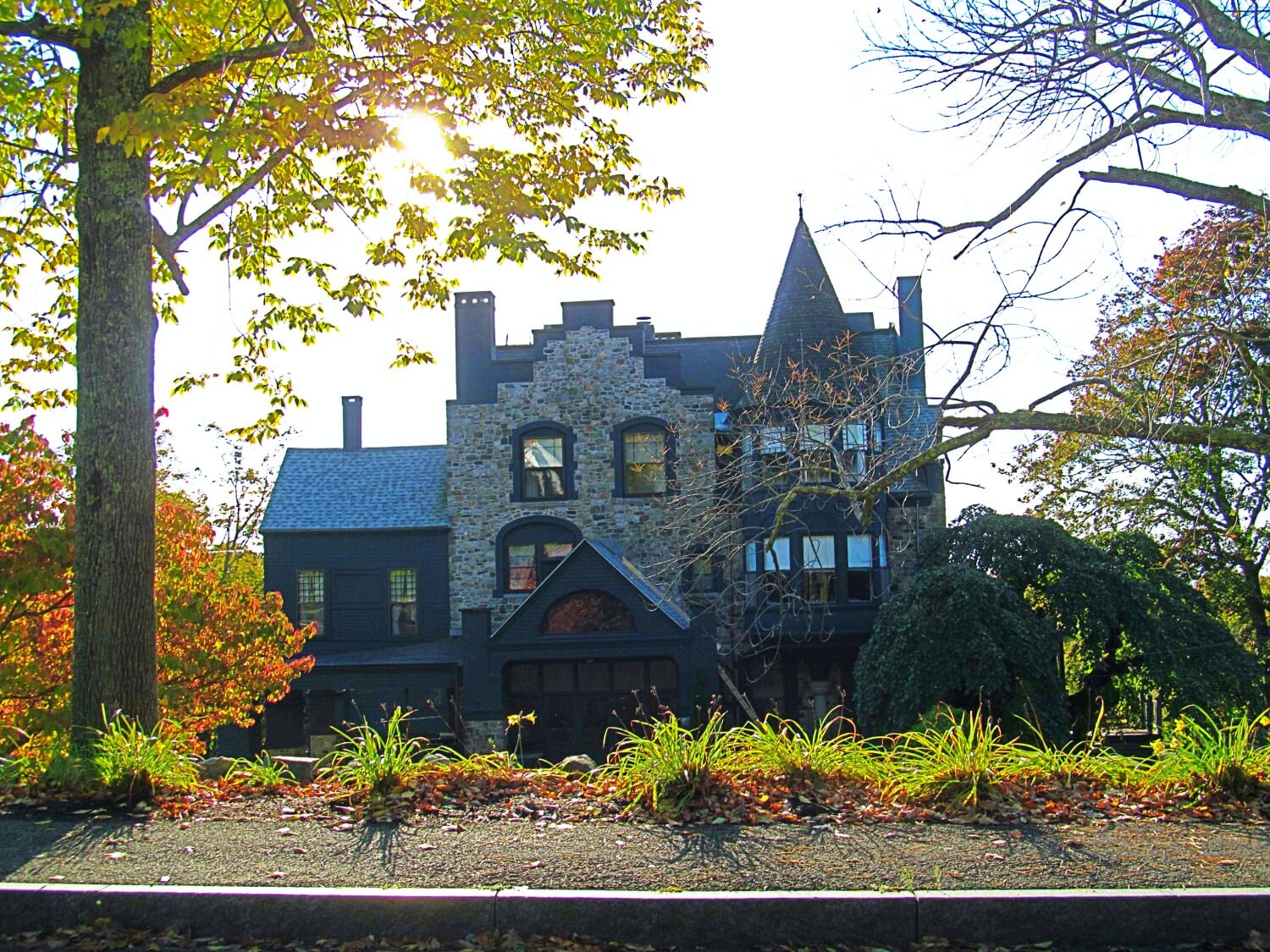Norumbega
Knox County Maine Unites States
castle, chateau
Norumbega Castle is a historic house at 63 High Street in Camden, Maine
Previous names
Norumbega
Description
Norumbega Castle is a historic house at 63 High Street in Camden, Maine. Built in 1886-87 for duplex telegraph inventor Joseph Barker Stearns, it is one of Mid Coast Maine's most elaborate 19th-century summer houses, exhibiting a sophisticated Queen Anne style in stone and wood. It now houses the Norumbega Inn, a bed and breakfast inn. It was listed on the National Register of Historic Places in 1974.
Description and history
Norumbega Castle stands north of downtown Camden, on the southeast side of High Street (United States Route 1), beyond its junction with Marine Drive. It is a 2-1/2 story structure, finished in rusticated stone with brick and wooden trim. It is basically rectangular in shape, but its features are asymmetrically arranged, typical for the Queen Anne period. Its main facade has three sections. The center section rises three stories, and is topped by a stepped gable. The right section, also three stories, has a projecting section topped by a conical turret. The interior is elaborately finished, and featured the latest innovations in modern households of the period, including electric lights and steam heat.
Norumbega was designed by New York City architect Arthur B. Jennings, and built a local contractor in 1886-87. It was built for Joseph Barker Stearns, a native of Weld, Maine, who made a fortune in the telegraph industry by patenting duplex telegraphy and licensing it worldwide. Jennings also designed the estate's carriage house, which is now in separate ownership, and is also listed on the National Register of Historic Places.
https://en.wikipedia.org/
The Norumbega Inn is a distinguished landmark which sits atop a rise overlooking the Penobscot Bay in Camden and is unique in design and structure from all other properties along the Maine coastline. Known to many who have seen it simply as “The Castle,” this is a grand building that invites wonder, curiosity and awe. This “stone castle by the sea” was built in 1886 by Joseph Stearns (b.1831, d.1895), a native of Weld, Maine and the inventor of the duplex telegraph.
Stearns sold his invention to Western Union and subsequently traveled throughout Europe doing business development for that company. He visited numerous castles and, upon his return, he decided to build a castle of his own. Our hotel reflects his vision, influenced by the historic castles he saw during his travels.
This stately building served as a private residence for nearly 100 years. It was added to the National Historic Registry in the early 1970s. From when it was built through 1984, there were multiple owners, including Mary Keep, Isabel Phelps, Helen Hubbard, Earle Pitman (whose family maintained residence here from 1943-1978) and W. Hodding Carter. In 1984, it was purchased by Elsie Griffin and converted to a B&B, managed by Mark Boland. They sold it to Murray and Elizabeth Keatinge in 1987, with Murray running the inn through the ‘90s. After his death in 1999, it transferred to trustees of his estate, Bruce & Roseanne Anderson and was run jointly with them and Murray’s son, Kent, until 2005. Thereafter Bruce & Roseanne ran the inn. The Norumbega was purchased from them in 2013 by Susan Walser and Phillip Crispo.
We are proud and honored to be part of the castle’s history. When we became owners of this iconic property in the spring of 2013, we immediately began the long process of bringing it back to life. After being shuttered for nearly two years, we reopened on Memorial Day Weekend, 2013.
https://www.norumbegainn.com/
Useful information
Free
WiFi
stay@norumbegainn.com
- Private property (B&B)
- Pets are not allowed
External links

